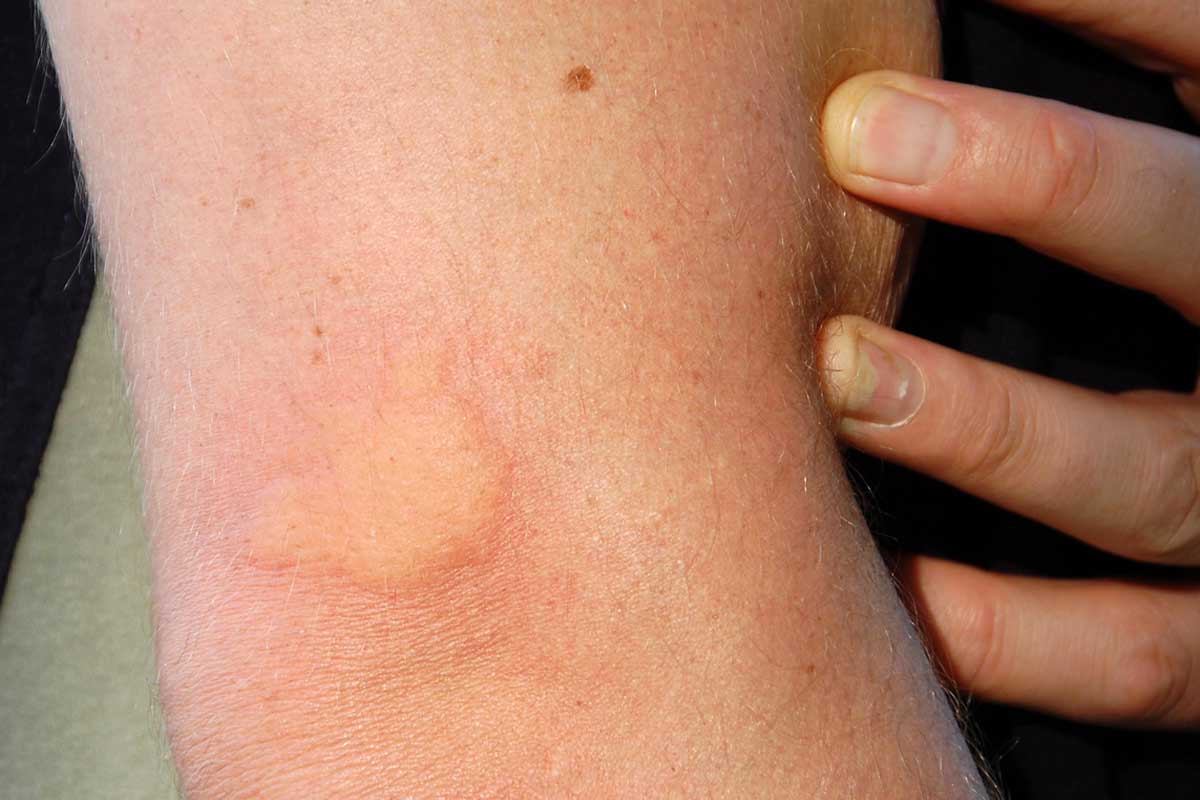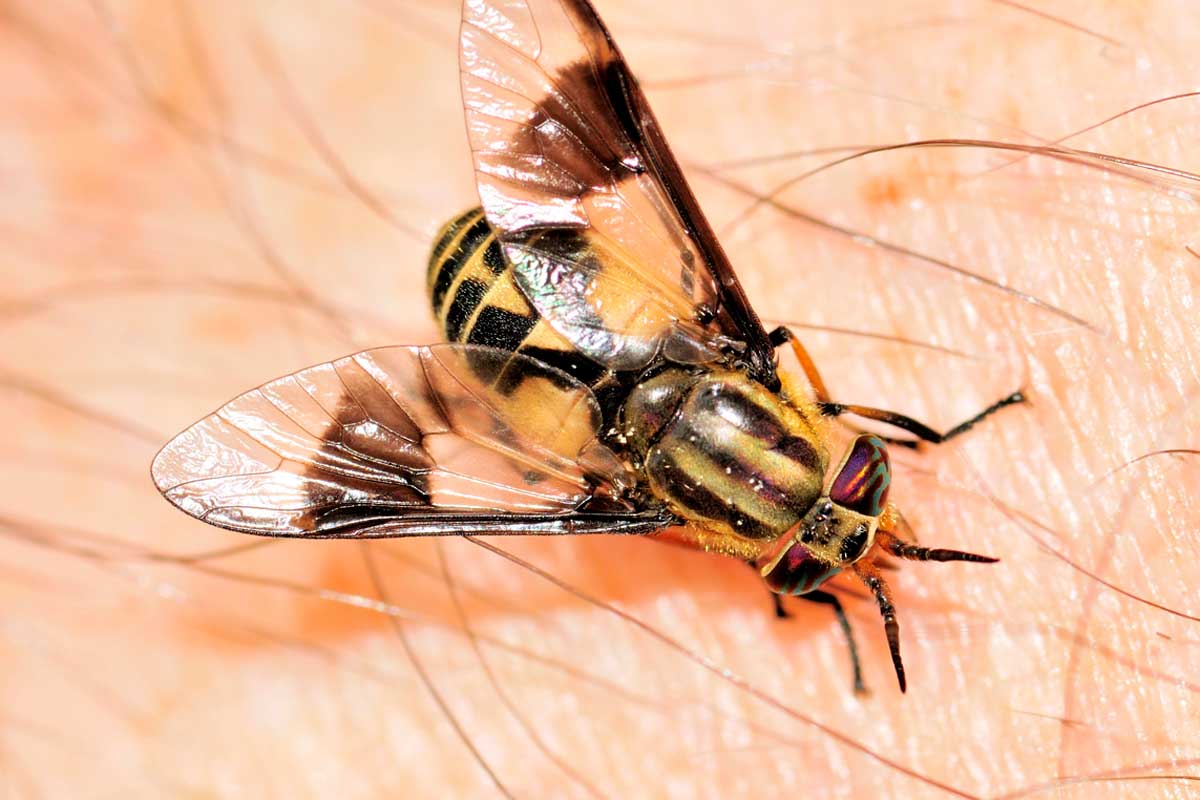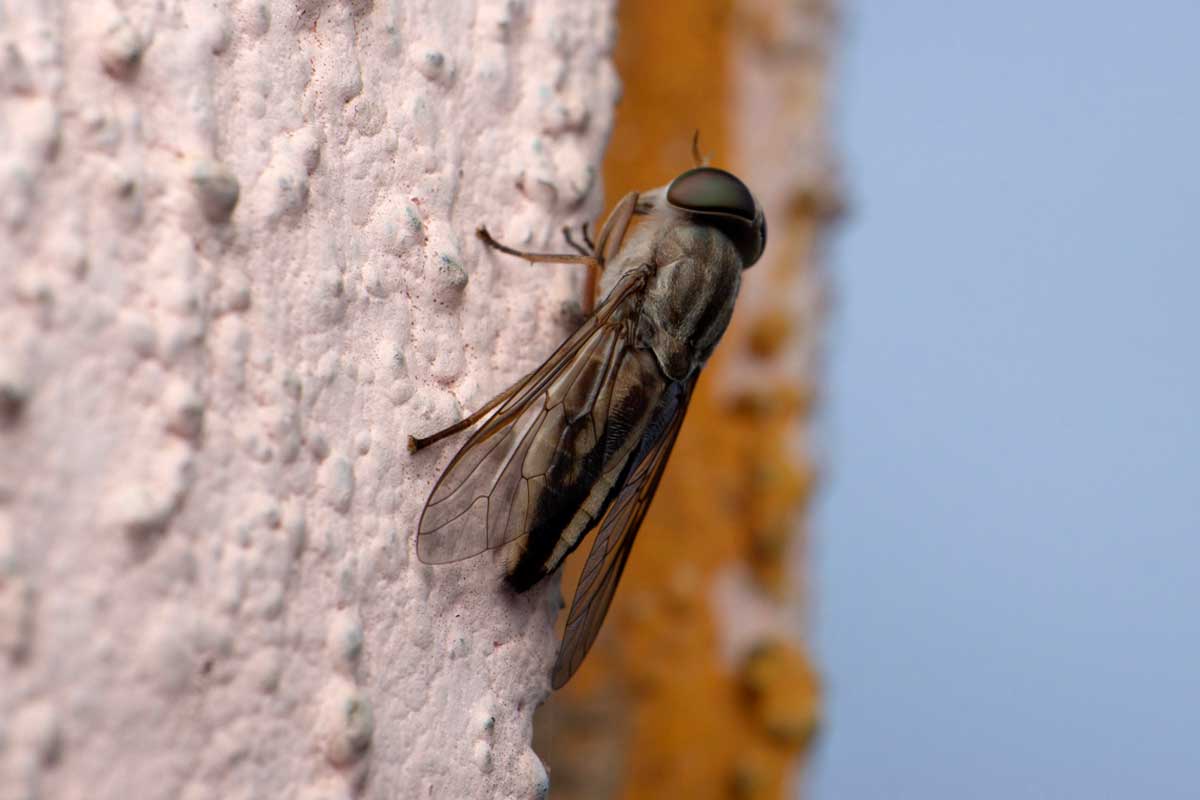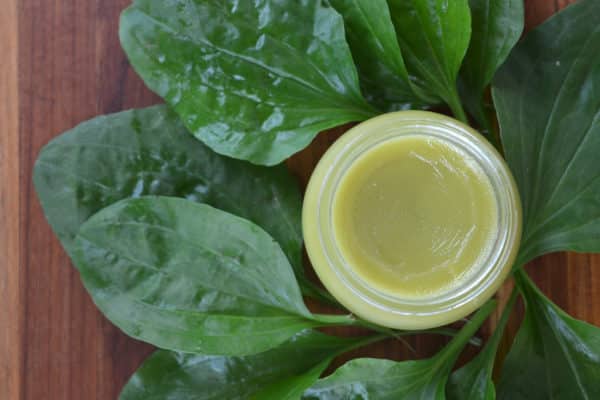Deer Fly Bites – Why They Hurt, Avoidance and Natural Relief
This post may contain affiliate links. Read my full disclosure here.
Deer flies are one of summer’s most annoying bloodsuckers, right up there with mosquitoes and ticks. If you’ve ever had the misfortune of being bitten by one, you know how painful and persistent these pests can be. Their bites are more than just itchy – they can swell, sting, and sometimes even cause allergic reactions.
In this article, we’ll cover why deer flies bite, tips to avoid bites and natural ways to soothe itching and swelling.

Table of Contents
What Are Deer Flies? (And How Are They Different from Horse Flies?)
Deer flies are medium-sized, fast-flying insects with a painful bite and a relentless attitude. You’ll typically notice them hovering around your head or shoulders, zigzagging through the air as they look for a good landing spot. They’re most active during hot, humid summer days, especially in wooded or wetland areas.
Here’s how to recognize a deer fly:
- Size: About 1/4 to 1/2 inch long—smaller than horse flies.
- Body: Slender and slightly humped, with a yellowish or grayish body.
- Eyes: Brightly colored, often green or gold, with iridescent stripes.
- Wings: Usually clear with dark bands or spots (a key ID feature).
- Flight: Silent and agile, often targeting your head or upper body.

In contrast, horse flies are larger, more robust, and even more aggressive:
- Size: Up to 1 inch long or more.
- Body: Stocky and dark-colored.
- Wings: Usually clear, without banding.
- Eyes: Often metallic green or solid-colored, with a wider head.
- Flight: Loud and strong—horse flies buzz audibly and will chase moving objects (even vehicles).

Both deer flies and horse flies belong to the Tabanidae family, and both females bite to obtain blood meals. But because of their size and flying style, deer flies can often sneak up more quietly and leave behind deceptively small but painful wounds.
Now that you know how to tell them apart, let’s take a closer look at why deer flies bite—and why their bites are so painful.
Why Do Deer Flies Bite?
Unlike mosquitoes, which use a needle-like mouthpart to draw blood, female deer flies use scissor-like mandibles to slice the skin and lap up the blood. That’s why they have such a painful bite.
Only the females bite, and they feed on blood to develop their eggs. They’re most active during warm months—especially late spring through summer—and are drawn to movement, dark colors, carbon dioxide, and body heat. If you’re working outside or hiking in deer fly territory, you’re a prime target.
How to Prevent Bites
The deer fly life cycle begins when the flies lay their eggs in mud, damp soil, or rotting vegetation near water sources. After hatching, the larvae live in moist soil or sediment and feed on organic matter and small insects. The adult flies emerge in late spring to early summer and are active during the hottest, most humid part of the season. This is usually June through August in much of the United States.
Avoiding deer flies entirely can be tough if you’re outdoors during peak season, but these strategies can help reduce your risk:
1. Wear Protective Clothing
- Cover exposed skin with long sleeve shirts, pants, and a wide-brimmed hat.
- Light-colored clothing is less attractive to deer flies than dark colors.
- Tuck pants into socks or boots to prevent flies from sneaking in.
2. Use Natural Repellents
Deer flies are notoriously resistant to many standard bug sprays, but some natural options may help. See “Deer Fly Repellents – Natural Ways to Get Rid of Deer Flies“.
3. Avoid Peak Hours
Deer flies feed primarily in full daylight, especially during hot, humid conditions. If possible, plan outdoor work or walks during early morning or late evening.
Would you like to save this?
4. Minimize Attraction
- Reduce sweating with moisture-wicking clothing.
- Avoid scented lotions, perfumes, or shampoos that may attract insects.
Can they Transmit Diseases?
While painful, most deer fly bites are just an itchy nuisance. However, they can carry disease.
In North America, the primary concern is tularemia, also known as rabbit fever or deer fly fever. It’s rare but serious, caused by the bacterium Francisella tularensis. Deer flies can transmit it mechanically when they bite an infected animal and then bite a human.
Tularemia symptoms include fever, ulcers at the bite site, swollen lymph nodes, and fatigue. If you experience these signs after a bite, especially if the area looks infected or you develop a high fever, seek medical attention.
Natural Remedies for Deer Fly Bites
Deer fly bites can quickly become red, swollen, and painful. I got pegged on the arm out in the garden recently, and it swelled up quickly. If you’re dealing with one, here are some natural ways to calm the reaction:
1. Cold Compress
Apply a cold pack or a clean cloth with cold water to reduce swelling and numb the pain.
2. Baking Soda Paste
Mix a small amount of baking soda with water to create a paste. Apply directly to the bite to help neutralize the skin’s pH and ease itching.
3. Plantain Poultice
Fresh plantain (Plantago spp.) leaves, chewed or mashed, make an excellent first-aid poultice. Apply the pulp to the bite and cover with a bandage. I used plantain infused salve on my bite and it helped tremendously.

4. Apple Cider Vinegar
Dab ACV on the bite using a cotton ball. Its anti-inflammatory properties may reduce swelling and soothe the itch.
5. Clay or Charcoal Poultices
Bentonite clay or activated charcoal mixed with water can help draw out irritants and reduce inflammation.
6. Essential Oils for Itching
Tea tree, lavender, or chamomile essential oil (diluted in a carrier oil) may help with itching and act as mild antiseptics.
Don’t Let Pests Ruin Summer!
Deer fly bites are no fun, but with some prevention and natural treatments, you can limit your discomfort and enjoy the great outdoors. Stay covered, stay alert, and keep a few plant-based remedies on hand to soothe any bites that break through your defenses.
Got a favorite natural remedy for bug bites? Let us know in the comments. We’re always looking for practical, tried-and-true solutions from the homesteading and gardening community.

This article was written by Laurie Neverman. Laurie lives with her husband and sons on 35 acres in northeast Wisconsin. They turned an abandoned pasture into a permaculture oasis, with two ponds, food forests, annual gardens, and more. She enjoys wildcrafting, ducks, and good books.
